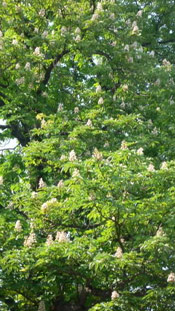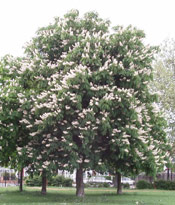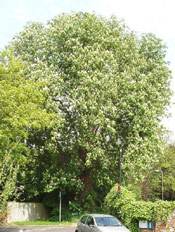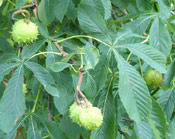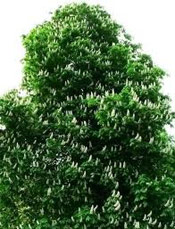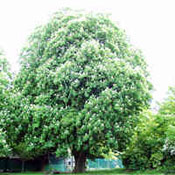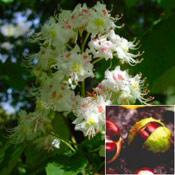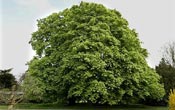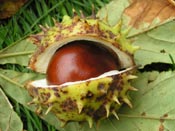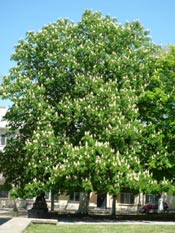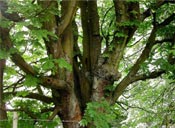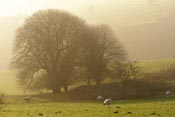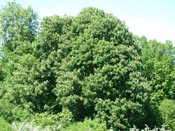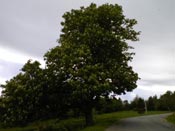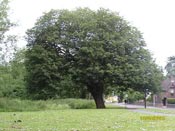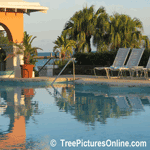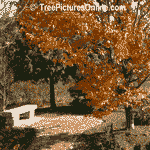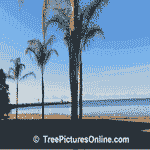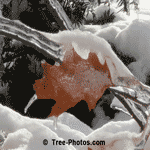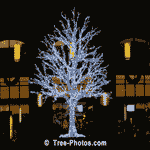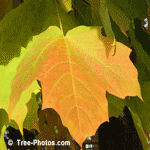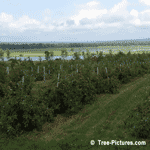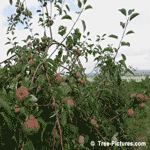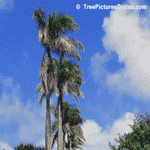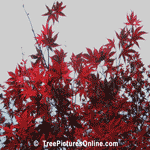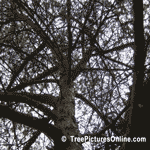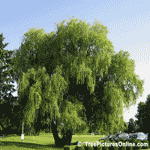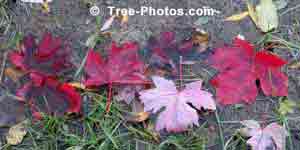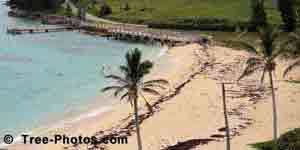Horse Chestnut Tree Pictures
Welcome to our horse chestnut tree pictures.
Horse Chestnut Tree Gallery has lots of nice pictures of horse chestnut trees.
You will also find a lot of wonderful information on horse chestnut trees, including information about the horse chestnut tree species, planting information, and much more.
This is valuable and useful information that can help you to learn more about the horse chestnut tree.
Horse Chestnut Images
Full size each horse chestnut tree picture you like, just click on the horse chestnut image to enlarge the horse chestnut photo. Enjoy these pictures of the horse chestnut trees.
Horse Chestnut Tree Pictures
Horse Chestnut Trees, Facts and
Information on the Horse Chestnut Tree Species
Horse Chestnut Tree Pictures 1 - Horse Chestnut Tree Pictures 2
Here is some detailed information on the horse chestnut tree.
Aesculus hippocastanum is a large deciduous tree, commonly known as Horse Chestnut or Conker tree.
Aesculus hippocastanum is native to a small area in the mountains of the Balkans in southeast Europe, in small areas in northern Greece, Albania, the Republic of Macedonia, Serbia, and Bulgaria (Pindus Mountains mixed forests and Balkan mixed forests). It is widely cultivated throughout the temperate world.
It grows to 36 m tall, with a domed crown of stout branches, on old trees the outer branches often pendulous with curled-up tips. The leaves are opposite and palmately compound, with 5 to 7 leaflets; each leaflet is 13 to 30 cm long, making the whole leaf up to 60 cm across, with a 7 to 20 cm petiole. The leaf scars left on twigs after the leaves have fallen have a distinctive horseshoe shape, complete with seven "nails". The flowers are usually white with a small red spot; they are produced in spring in erect panicles 10 to 30 cm tall with about 20 to 50 flowers on each panicle. Usually only 1 to 5 fruit develop on each panicle; the shell is a green, softly spiky capsule containing one (rarely two or three) nut-like seeds called conkers or horse-chestnuts. Each conker is 2 to 4 cm diameter, glossy nut-brown with a whitish scar at the base.
The common name horse-chestnut is reported as having originated from the erroneous belief that the tree was a kind of chestnut, together with the observation that eating them cured horses of chest complaints.
Cultivation for its spectacular spring flowers is successful in a range of climatic conditions provided summers are not too hot, with trees being grown as far north as Edmonton, Alberta, the Faroe Islands, and Harstad, Norway. In more southern areas, growth is best in cooler mountain climates.
In Britain and Ireland, the nuts are used for the popular children's game conkers. During the two world wars, horse-chestnuts were used as a source of starch which in turn could be used via the Clostridium acetobutylicum fermentation method devised by Chaim Weizmann to produce acetone. This acetone was then used as a solvent which aided in the process of ballistite extrusion into cordite, which was then used in military armaments.
The nuts, especially those that are young and fresh, are slightly poisonous, containing alkaloid saponins and glucosides. Although not dangerous to touch, they cause sickness when eaten. Some mammals, notably deer, are able to break down the toxins and eat them safely. They are reputed to be good for horses with wind, but this is unproven and feeding them to horses is not advisable. The saponin aescin (a complex mixture of triterpene glycosides), however, has been used for health purposes (such as varicose veins, edema, sprains) and is available in food supplements, as is the coumarin glucoside aesculin.
A selection of fresh conkers from a horse-chestnut.In the past, horse-chestnut seeds were used in France and Switzerland for whitening hemp, flax, silk and wool. They contain a soapy juice, fit for washing of linens and stuffs, for milling of caps and stockings, etc., and for fulling of cloth. For this, 20 horse-chestnut seeds were sufficient for six liters of water. They were peeled, then rasped or dried, and ground in a malt or other mill. The water must be soft, either rain or river water; hard well water will not work. The nuts are then steeped in cold water, which soon becomes frothy, as with soap, and then turns milky white. The liquid must be stirred well at first, and then, after standing to settle, strained or poured off clear. Linen washed in this liquid, and afterwards rinsed in clear running water, takes on an agreeable light sky-blue colour. It takes spots out of both linen and wool, and never damages or injures the cloth.
Horse Chestnut Tree Pictures 1 - Horse Chestnut Tree Pictures 2
Thank you for visiting our Horse Chestnut Tree Pictures at Tree Pictures Online.com, please come back soon for more great tree pictures!
Trees: Recent Tree Photos, Pics & Images |
||
Palm Tree Pictures |
Beech Trees |
Palm Trees |
Oak Tree Gallery |
Christmas Trees |
Maple Trees |
Apple Tree Photo Gallery |
Apple Tree Images |
Palm Trees Gallery |
Japanese Maple Trees |
Pine Tree Gallery |
Willow Trees Category |
|
Maple Tree Leaves: More images of Maples? Please follow to the Maple Tree Gallery. Full size the photo, just click on maple leaf image. |
||
Pictures Sites
Fireplace Pictures -
Tree Pictures -
Gazebo Pictures -
Symbols & Their Meanings
Resume Samples -
Church Pictures -
Manufactured Home Pictures
Natural Log Siding -
Shadow Puppets -
Caribbean Islands
Play Touch Games -
Waterfall Pictures
Make Hot Pictures - Job Application Forms
![]()


